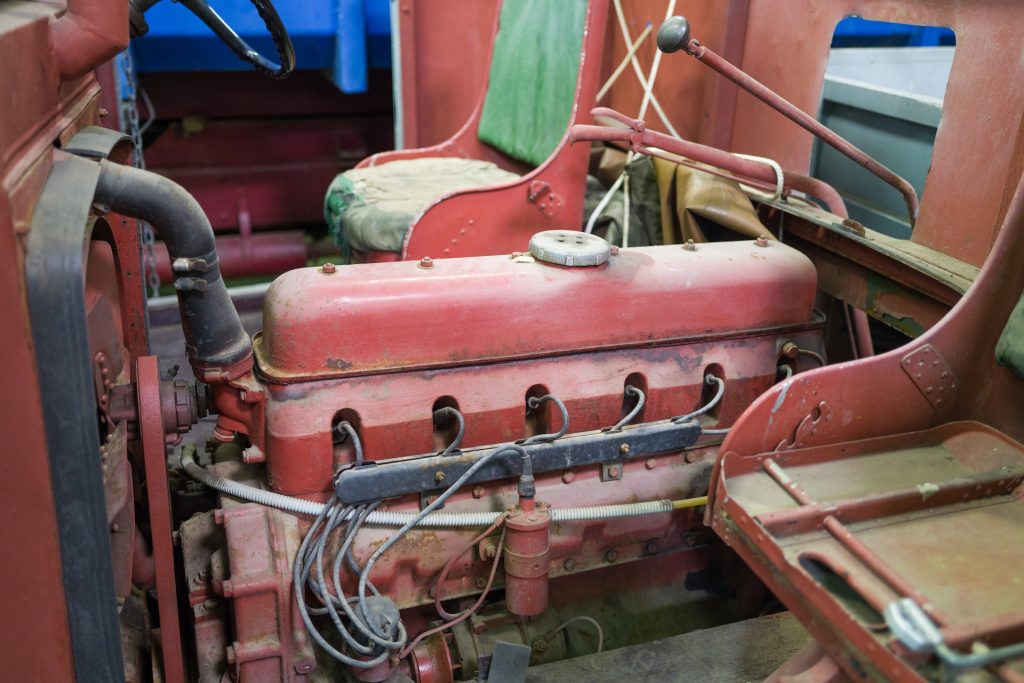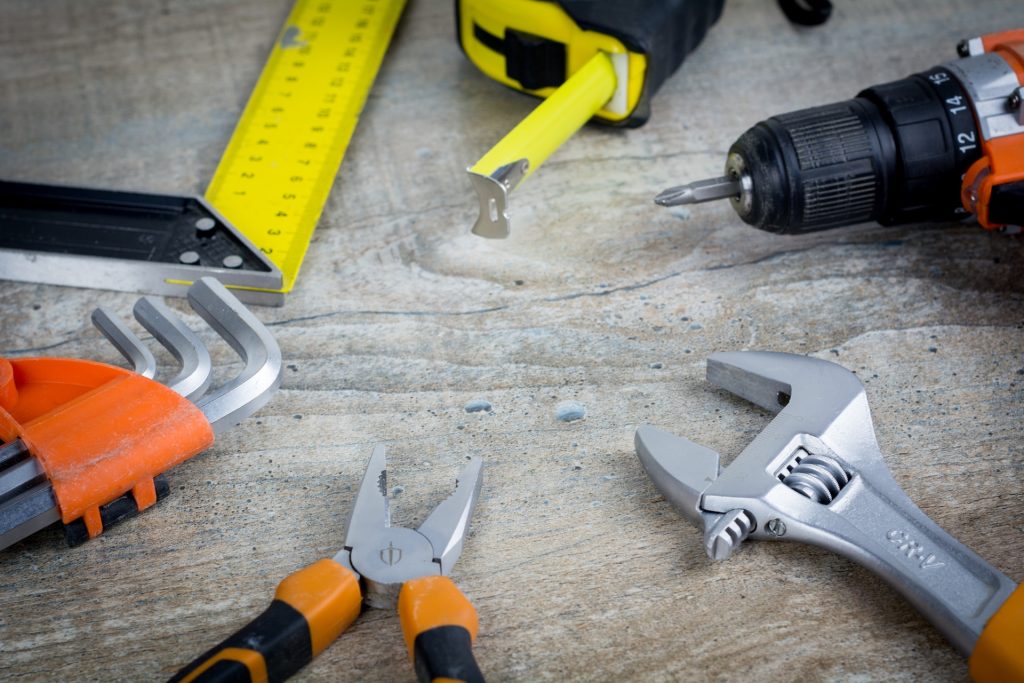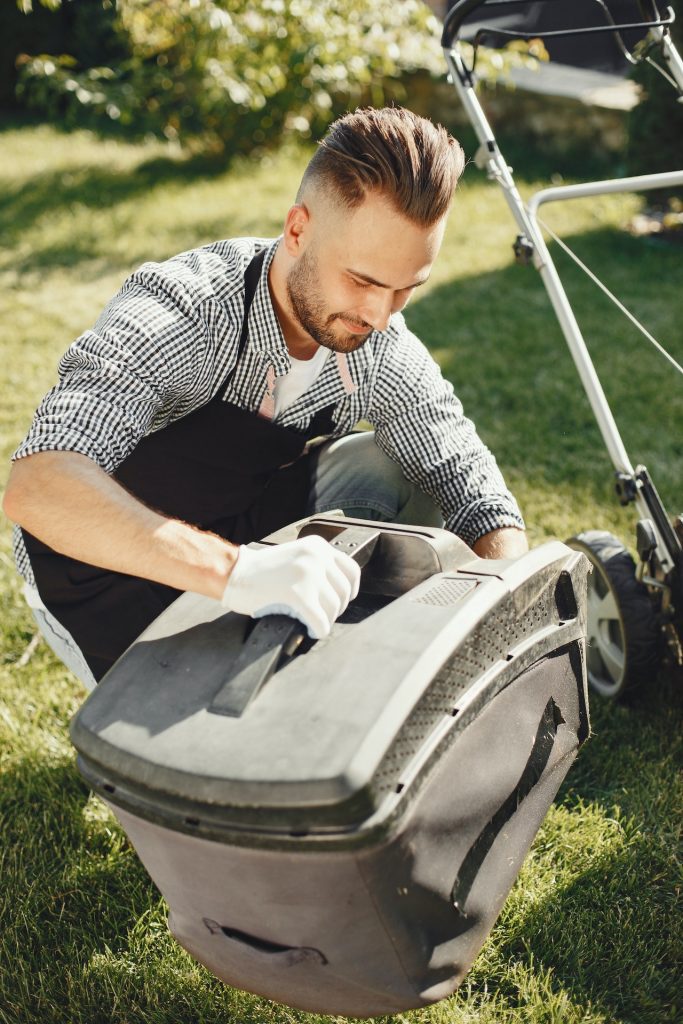We’ve all experienced the frustration of a stubborn lawn mower that refuses to start, despite countless attempts at yanking on the starter string. In these situations, looking for a quick fix to get your mower up and running is tempting.
Many people believe that using starter fluid is the best solution in such cases. However, we strongly advise against this approach, as it can lead to long-term damage to your lawn mower’s engine. Instead, we recommend using other alternatives, such as carburetor cleaner, until you can address the underlying issue with your mower.
Let’s explore the dangers of using starter fluid on lawn mowers and look at some tried-and-true alternatives to get your mower up and running.
Why Starter Fluid Is Bad for Lawn Mowers
Engine Damage
One of the primary reasons using starter fluid on a lawn mower is frowned upon is because it can lead to engine damage.
Starter fluid burns hotter than gasoline, and when sprayed directly into the combustion chamber, it can cause piston rings to crack. Damaged rings might lead to reduced engine efficiency, increased oil consumption, and, in severe cases, a complete engine failure.

In addition to harming the piston rings, the excessive heat from starter fluid can damage the cylinder walls because these surfaces are designed to withstand the lower temperatures of gasoline combustion. When exposed to the intense heat of starter fluid, the cylinder walls may develop scoring or other surface imperfections.
As with damaged piston rings, this situation may lead to diminished engine performance and a shortened lifespan for your mower.
The financial implications of these types of repairs should not be underestimated. Fixing or replacing damaged piston rings and cylinder walls can be quite costly, often requiring professional intervention and specialized tools.
Furthermore, these repairs may only serve as temporary solutions, as the underlying issue — the use of starter fluid — could continue to cause problems down the line if not addressed.
Voided Warranty
Another repercussion of using starter fluid on your lawn mower is the risk of voiding your warranty. Manufacturers often provide specific guidelines and recommendations for starting and maintaining their products to ensure optimal performance and longevity. These guidelines are in place to protect both the equipment and the consumer.
The use of starter fluids may not be recommended or allowed by your lawn mower’s manufacturer due to the potential damage it can cause to the engine.
If you choose to ignore these recommendations and proceed with using starter fluid, you run the risk of voiding the warranty on your lawn mower. It means that if any issues arise as a result of using starter fluid, such as engine damage, the manufacturer is under no obligation to cover the cost of repairs or replacements.
Being left without a warranty can be a costly mistake for homeowners. Not only will you have to pay out-of-pocket for any necessary repairs, but you’ll also lose the peace of mind that comes with knowing your investment is protected.
In some cases, the damage caused by using starter fluid could be so severe that it renders your lawn mower unusable, forcing you to purchase a new one entirely.
Alternatives to Using Starter Fluid
Carburetor Cleaner
Instead of reaching for starter fluid, use carburetor cleaner to start your lawn mower. It is a safer alternative, as it helps remove dirt and debris from the carburetor without causing damage to the engine.
A clogged or dirty carburetor is a common cause of engines not starting, so giving it a thorough cleaning can often do the trick.
When faced with a stubborn lawn mower that won’t start, simply remove the air filter cover and spray some carburetor cleaner into the air intake. Give it a few minutes to dissolve any buildup before attempting to start your mower again.

Remember that using carburetor cleaner should only be a temporary solution during emergencies. Prolonged use of this method without addressing the root cause of your mower’s starting issues may eventually lead to further complications.
Fresh Gasoline
Another simple fix for a stubborn lawn mower engine is to ensure you’re using fresh gasoline. Over time, gasoline can break down and lose its potency, leading to poor engine performance or even a complete failure to start. Old or contaminated gas can cause your engine to sputter or not start at all.
If the gas in your mower has been sitting for more than 30 days, drain the tank and refill it with fresh fuel before starting the engine. Gasoline left unused for an extended period can develop gum and varnish deposits, which can clog the fuel system and hinder the proper flow of fuel to the engine.
By using fresh gasoline, you’ll ensure that your mower’s engine receives clean fuel that will promote smooth ignition and efficient combustion.
Additionally, consider adding a fuel stabilizer to your gas can when filling up at the gas station. Fuel stabilizers help maintain the quality of gasoline by slowing down the oxidation process and preventing the formation of gum and varnish deposits. Adding a stabilizer can extend the shelf life of your gasoline, making it safe to store for longer periods without worrying about potential contamination or degradation.
Check the Spark Plug
A faulty spark plug can also prevent your lawn mower from starting. It is a crucial component of your mower’s engine, providing the spark to ignite the air-fuel mixture in the combustion chamber.
The spark plug can become worn or damaged, preventing it from functioning correctly and leaving you with an uncooperative lawn mower.
Remove the plug from the engine to determine whether a faulty spark plug is causing your starting issues. Carefully examine it for any signs of wear or damage, including a cracked or chipped insulator, a burned or eroded electrode, or excessive carbon buildup. Any of these issues can impede the proper function of your spark plug and prevent your lawn mower from starting.
If you do indeed find that your spark plug is damaged or excessively worn, it’s time to replace it with a new one.
Before installing the new plug, be sure to check the electrode gap — the distance between the center and ground electrodes — and adjust it according to the specifications listed in your owner’s manual. This is an important step, as an improperly gapped spark plug can lead to reduced engine performance or even further damage to your lawn mower’s engine.

Once you’ve installed the new, properly gapped spark plug, give your lawn mower another try. With any luck, this simple fix will solve the issue.
Inspect the Choke
If your lawn mower has a manual choke, it must be adjusted appropriately before starting the engine. An improperly adjusted choke can restrict airflow, making it difficult for the engine to start.
There are several common issues related to improper choke adjustment that you may encounter when starting your lawn mower, from a flooded engine due to too much fuel being delivered to an overly lean fuel mixture resulting from insufficient fuel delivery.
To avoid these issues, familiarize yourself with the proper choke operation for your lawn mower model.
Your lawn mower’s owner’s manual can provide specific instructions on adjusting the choke, whether it’s a simple lever or a more complex mechanism. Read these instructions carefully and follow them closely to get the best possible performance from your mower.
Adjusting the Choke for Optimal Performance
Once you’ve consulted your owner’s manual and have a clear understanding of how to adjust the choke on your lawn mower, it’s time to put that knowledge into practice.
Start by locating the choke lever or mechanism on your mower. Then, follow the manual’s instructions to set the choke to the recommended position for starting the engine.
After successfully starting the mower, allow it to run for a few moments at the initial choke setting to warm up the engine. Gradually adjust the choke as needed, according to your owner’s manual, until the engine runs smoothly and efficiently. Doing this will ensure optimal performance and prolong the life of your lawn mower.
The Bottom Line
Although starter fluid may seem like a quick and easy solution for getting a stubborn lawn mower started, it can actually do more harm than good. The high heat it generates can cause considerable damage to the engine. Ultimately, it can result in a shortened lifespan for your mower.
In contrast, homeowners can try several safer alternatives to starter fluid without risking engine damage or voiding their warranty. For instance, carburetor cleaner is an effective solution to start your lawn mower without causing harm.
Clogged or dirty carburetors are common culprits behind engines refusing to start, so thoroughly cleaning it with carburetor cleaner can often solve the problem.
Remove the air filter cover, spray some carburetor cleaner into the air intake, wait for a few minutes to let it work its magic, and then attempt to start your mower again. It might be just what your mower needs to get right back into action.
Was it helpful?

Enamored with the world of golf Jack pursued a degree in Golf Course Management at THE Ohio State University. This career path allowed him to work on some of the highest profile golf courses in the country! Due to the pandemic, Jack began Inside The Yard as a side hustle that quickly became his main hustle. Since starting the company, Jack has relocated to a homestead in Central Arkansas where he and his wife raise cattle and two little girls.

